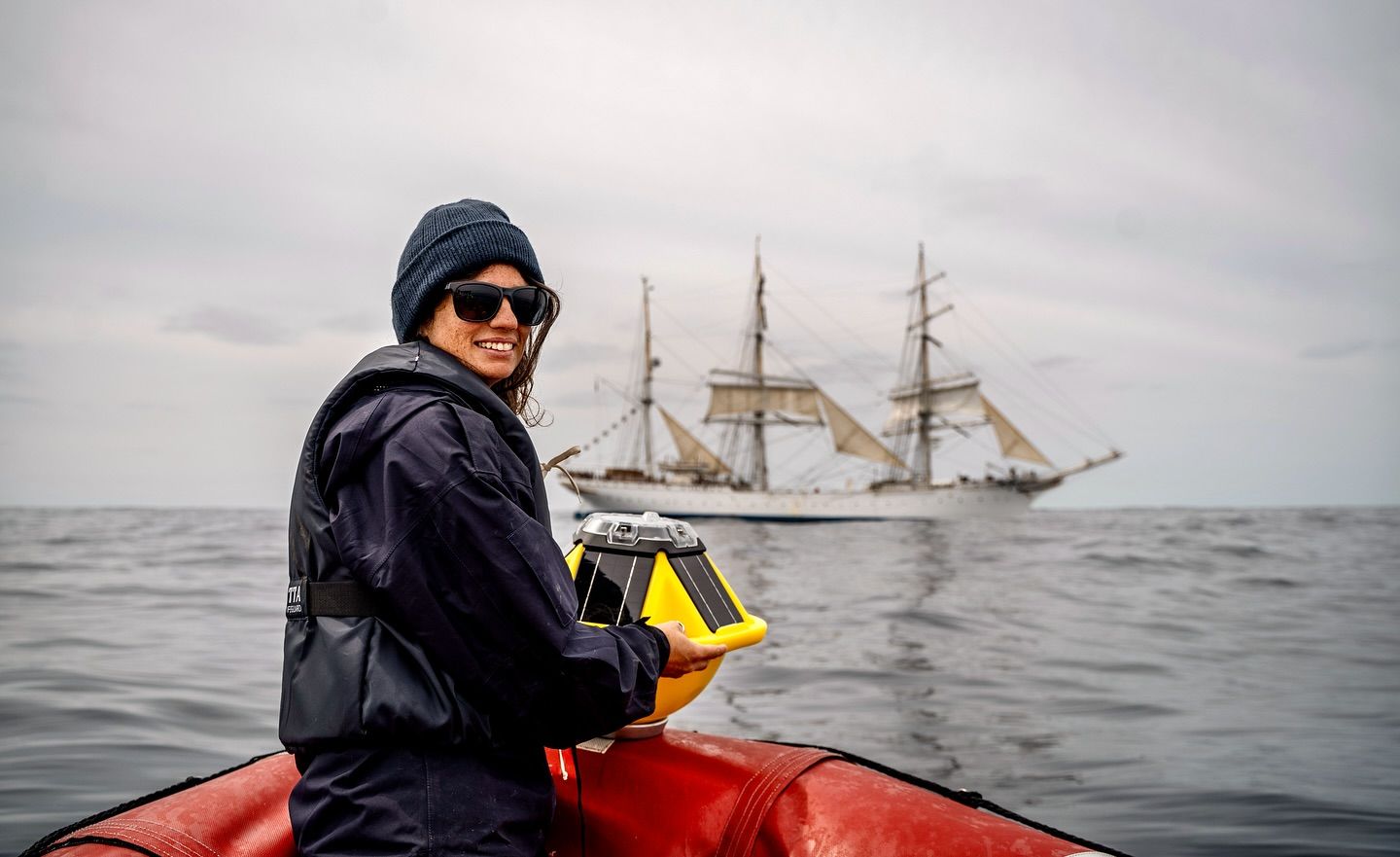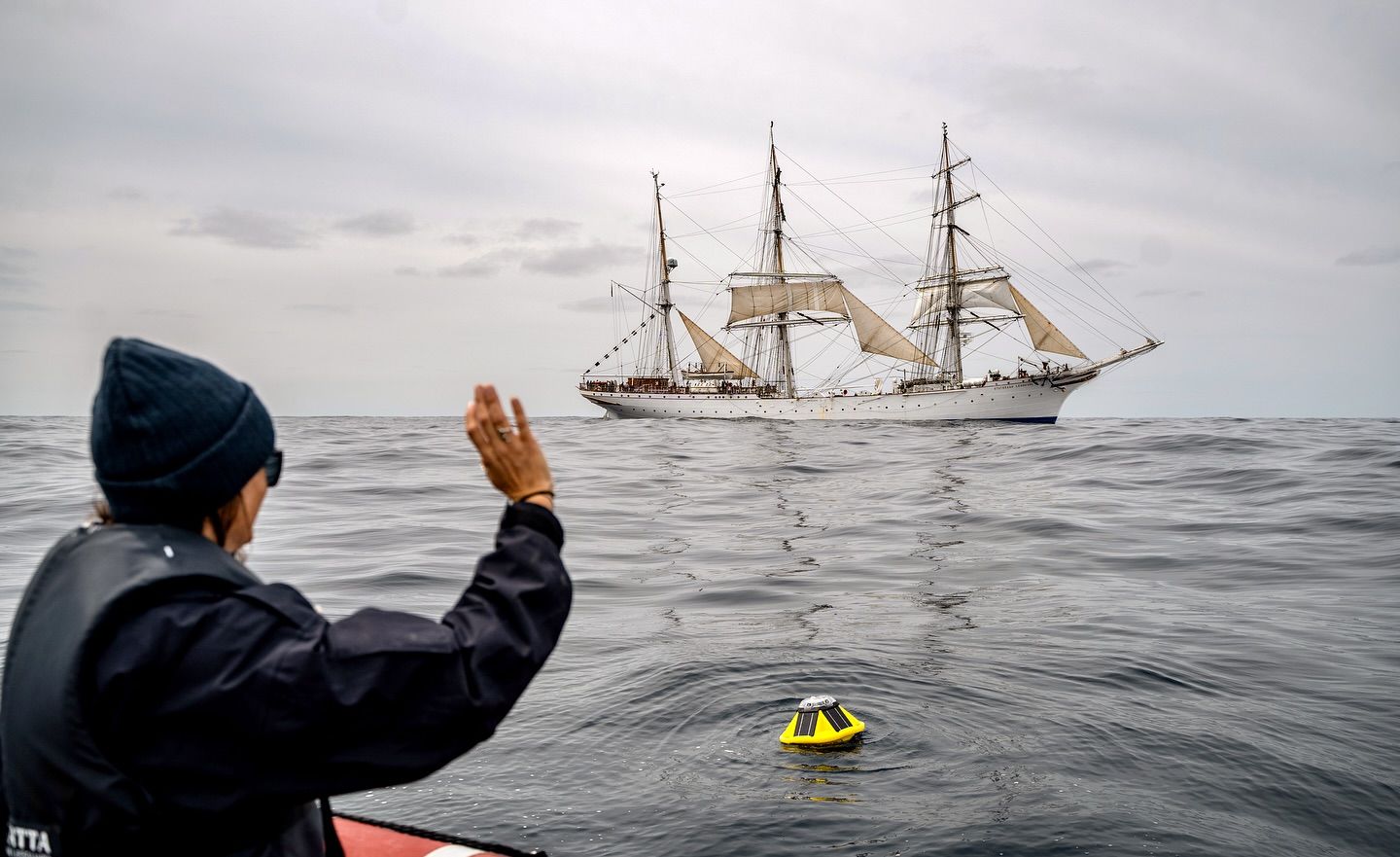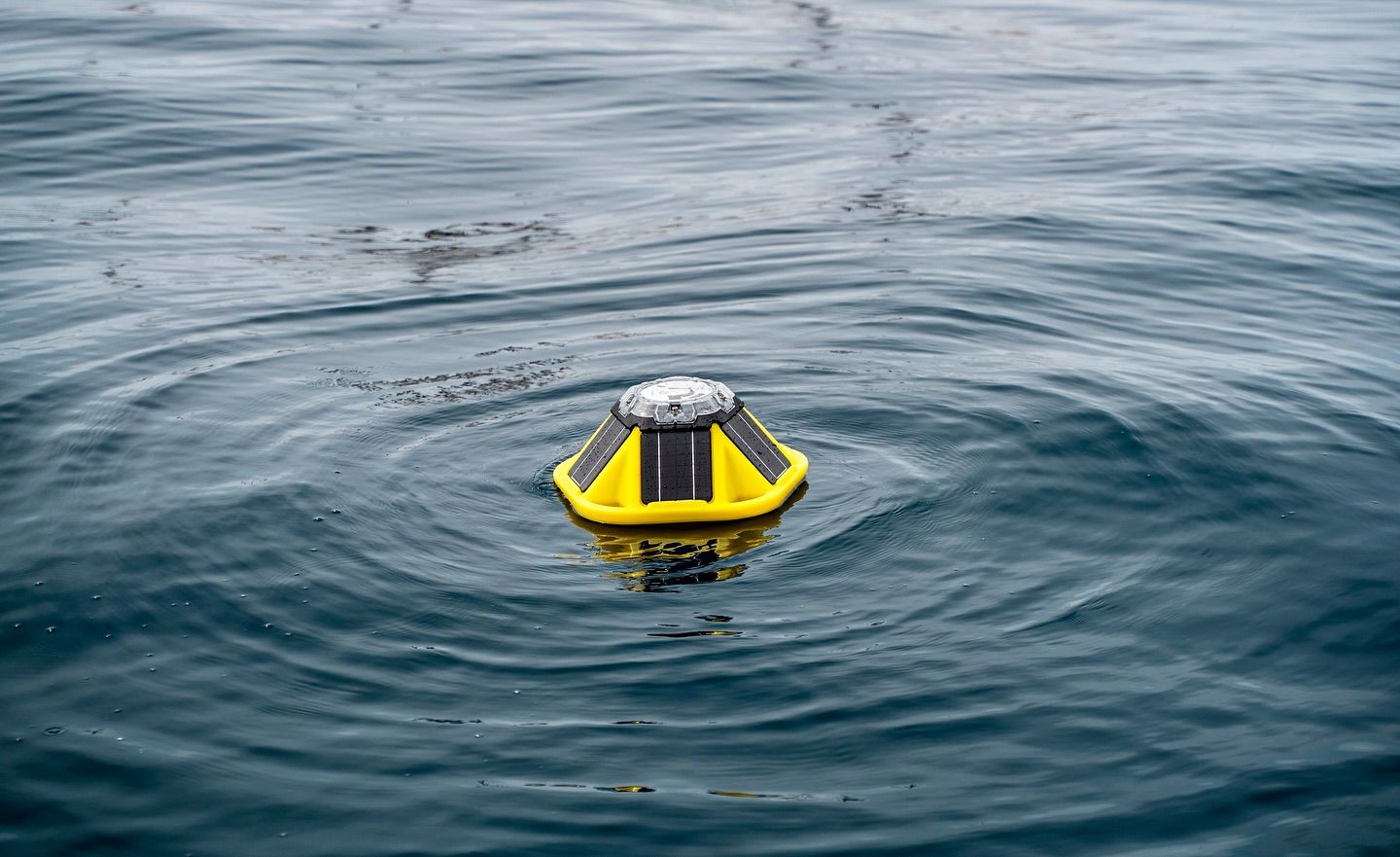On the way from the Azores to Greenland, Statsraad Lehmkuhl crosses the Gulf Stream. The current starts in the Gulf of Mexico and brings heath to northern Europe.
The Gulf Stream carries more water than all the world’s rivers combined, flowing northeast towards Europe. Without this stream Scandinavia would have the same cold climate as Greenland, Alaska, and northern Canada.

The last few yeas there are indications that the Gulf Stream is weakining. Could it come to a halt? No…, and perhaps.
Wind, sun, and the Earth’s rotation
What drives the water out of the Gulf of Mexico and into the Atlantic is wind. The trade winds, which blow from east to west near the equator, and the westerlies, which blow from west to east between 30 and 60 degrees north, sustain a large gyre in the North Atlantic.

The water flows north along the western side and south along the eastern side of the ocean. Because the planet rotates, currents along the western edge of an ocean basin become stronger than those on the eastern edge. The Gulf Stream is therefore a powerful current: 100 km wide, 800–1,200 meters deep, and moving at about 2.5 m/s at the surface.
As long as the sun shines and the Earth keeps rotating, this vast gyre will keep spinning in the Atlantic. No risk of it stopping, that is.
AMOC
But it is not this gyre that carries warm water to Northern Europe and Scandinavia. Off Newfoundland, a system scientists call the "Atlantic Meridional Overturning Circulation", abbreviated AMOC, takes over.

The engine behind AMOC is differences in temperature and salinity. Cold, salty water is heavier than warmer, less salty water. The cold in the north cools the ocean surface and increases its salinity, causing the water to sink. This engine works like a pump - the sinking water is the piston that pulls warm water northward along the surface and pushes cold water southward at depth.
Wind and tides create currents at the surface, but all the deep ocean currents are formed this way, driven by differences in salinity and temperature.
Important roles
In addition to influencing the climate, this mechanism does two other important jobs:
The sinking water carries CO2 from the atmosphere. Over the last 100 years, the ocean has absorbed a quarter of all the CO2 humans have emitted. Surface water absorbs CO2 everywhere, but there are only two places where this CO2-rich water sinks to the depths: around Antarctica and in the North Atlantic.
When deep water eventually rises again, it brings with it a wealth of nutrients that, without these currents, would remain locked in the seafloor.
Moving northwards
Now that the planet is warming, scientists have begun to wonder whether the “pump” in the Norwegian Sea and the North Atlantic might stop. The northern regions are warming the fastest, so the water is no longer cooled as much as before, while ice from Greenland and floating in the Arctic Ocean is melting, making the water less salty.

Marius Årthun is a researcher at the Geophysical Institute at the University of Bergen and at the Bjerknes Centre for Climate Research. He studies AMOC.
Årthun’s recent work shows that the formation of deep water, the “pump” in AMOC, is moving northwards into the Arctic Ocean as the sea ice disappears.
– Theories about such a shift have existed, says Marius Årthun in an article published by the Bjerknes Centre. But it was expected to happen only in a much warmer future. That it has already been underway for several decades, we did not know.
A warning
Årthun does not believe there will be a sudden stop to the current in the next decades, as some have feared, but he warns against becoming complacent.
– Atlantic water is pushing into the Arctic, but it cannot do so forever. How long can the Arctic keep the wheel turning? Will we reach a point where even that gear is worn out?























